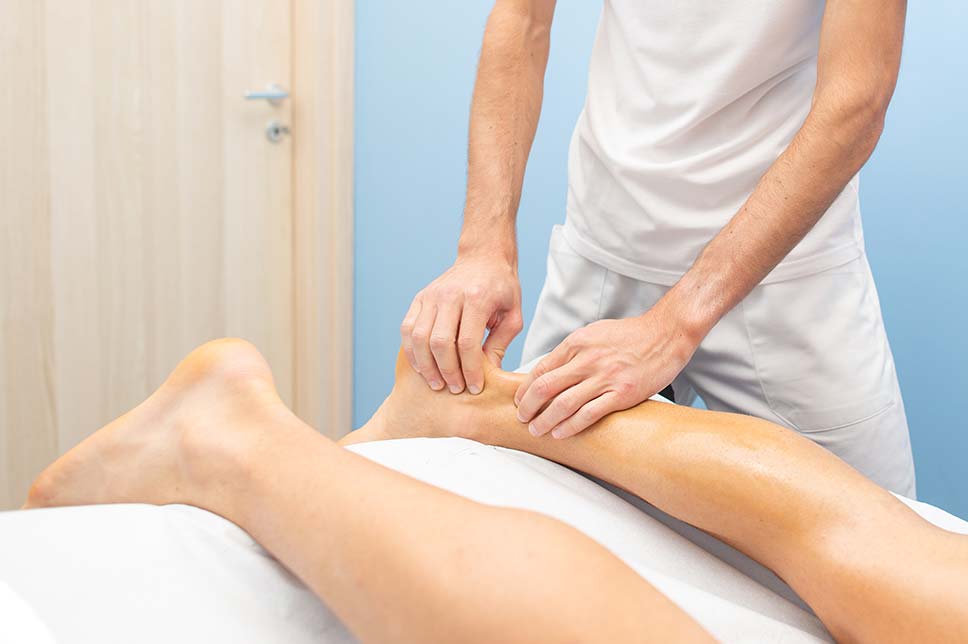Ankle Ligament Sprains
The ankle is a joint that can commonly be injured in twisting and turning the foot into an awkward position (normally downwards and inwards.)
This can overstretch the ligaments on the side of the ankle and cause an inflammatory reaction with heat, redness, and swelling and bruising that may take several weeks to recover.
MyPhysio has expert knowledge in advising, strapping and rehabilitating the ankle back to sport, making sure your balance reactions improve and recover as quickly as possible.
Osteoarthritis
the ankle can suffer from osteoarthritis, and can stiffen up causing pain when walking and first thing in the morning.
it is caused by a gradual degredation of the cartilage inside teh joint through natural ageing, sporta nd wear and tear. it can be easily treated with physiotherapy to loosen up the joints, treat the pain, and get the ankle stronger so that the muscles protect the joint better.
Occasionally ankles need injections or surgery – MyPhysio has great links with all of the local foot and ankle surgeons for specialist opinions if required.
Plantar Fasciitis
Plantar fasciitis wich used to be termed “policeman’s heel” is put simply an overuse problem. it is more common in people that are very physically active on tehir feet, and can be more common in the female over 55 population, or the overweight.
Strain goes through the arch of the foot, pulling on the bone causing pain and shortening and tighetning of the muscles. it is called a selflimiting condition in that it usually gets better on its own, but can, be accelerated with the use of insoles, stretches, taping, electrotherapy, and strength work for the foot. we work very closely with 2 Biomechanical Podiatrists who hep or patients when the need arises for insole therapy.

Achilles Tendon Problems
The Achilles tendon is fibrous tissue that connects the heel to the muscles of the lower leg: the calf muscles.
Leg muscles are the most powerful muscle group in the body and the Achilles tendon is the thickest and strongest tendon in the body. Contracting the calf muscles pulls the Achilles tendon, which pushes the foot downward.
This contraction enables: standing on the toes, walking, running, and jumping.
Each Achilles tendon is subject to a persons entire body weight with each step. Depending upon speed, stride, terrain and additional weight being carried or pushed, each Achilles tendon may be subject to up to 3-12 times a persons body weight during a sprint or push off.
Therefore it is unsurprising that the Achilles tendon can be prone to tears, strains and tendonitis (now known as tendinopathy or tendonosis).
It is relatively common in athletes who have changed their training regime, or who are doing lots of impact training, middle aged gentleman still active in sport – because the muscle fibres start to chnage from quick to slow more endurance fibres, and in middle aged women due to hormonal changes.
MyPhysio can help in the diagnosis and treatment of this condition using stretches, strength and loading programmes ( as per latest research), taping, insoles and exercise rehabilitation. We also offer gait analysis to help correct any biomechanical issues that may be contributing to the condition.
